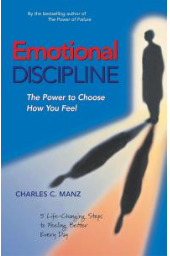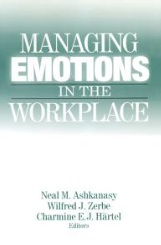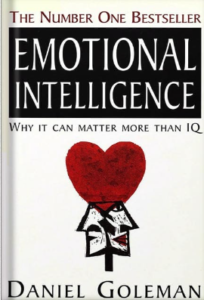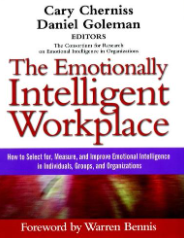Mental health art week is held on 22 May to 28 May. The tips of the month have been chosen to support the theme of the week, Feeling Your Emotions. Here are five books on emotions:
 Stein, S. J., Book, H. E., & Kanoy, K. (2013). The student EQ edge: Emotional intelligence and your academic and personal success. John Wiley & Sons.
Stein, S. J., Book, H. E., & Kanoy, K. (2013). The student EQ edge: Emotional intelligence and your academic and personal success. John Wiley & Sons.
The aim of this book is to help young people better understand and manage both their own behaviour and the behaviour of others around them. By providing examples and learning opportunities, the authors help students make a difference in both their academic and personal life. The eight parts include topics such as self-perception, decision-making, stress management and general well-being. With companion workbook.
 Manz, C. C. (2003). Emotional discipline: the power to choose how you feel; 5 life changing steps to feeling better every day. Berrett-Koehler.
Manz, C. C. (2003). Emotional discipline: the power to choose how you feel; 5 life changing steps to feeling better every day. Berrett-Koehler.
Manz’s premise is that our feelings have a great impact on our effectiveness, energy and level of contentment. We can influence the way we feel by making something Manz calls “emotional discipline choices”: healthy eating, exercising, and a general positive outlook to name the most common ones. He also talks about other strategies, such as breathing techniques, feeling your feelings, finding flow, and more. There are quite a few ways you can gain the power to choose how you feel.
 Ashkanasy, N. M., Zerbe, W. J., & Hartel, C. E. J. (2002). Managing emotions in the workplace. Taylor & Francis.
Ashkanasy, N. M., Zerbe, W. J., & Hartel, C. E. J. (2002). Managing emotions in the workplace. Taylor & Francis.
People are emotions, and they naturally bring feelings into play with their behaviour, thoughts, and actions. The authors of this book are searching for a deeper understanding of the interplay between emotion and organization. The book consists of expert articles that discuss emotion in organizations from different points of view: change, conflicts, decision making and emotional labour.
 Goleman, D. (1996). Emotional intelligence: Why it can matter more than IQ. Bloomsbury.
Goleman, D. (1996). Emotional intelligence: Why it can matter more than IQ. Bloomsbury.
The link between intelligence and emotion has been recognized for a long time, but it was only in the 1995 book by Goleman that it became popular. According to Goleman, only a person who recognizes and accepts his own feelings and knows how to control them can act in a truly intelligent way.
 Cherniss, C., & Goleman, D. (2001). The emotionally intelligent workplace: How to select for measure, and improve emotional intelligence in individuals, groups, and organizations. Jossey-Bass.
Cherniss, C., & Goleman, D. (2001). The emotionally intelligent workplace: How to select for measure, and improve emotional intelligence in individuals, groups, and organizations. Jossey-Bass.
This is natural continuation for the work Daniel Goleman started with his previous book. The primary objective of the authors is to add to the understanding of emotional intelligence and its role at work. They link competences such as self-confidence, initiative and teamwork to emotional intelligence and explore their contribution to the performance of both individuals and organizations.
Thank you for the image: Gino Crescoli @ Pixabay



